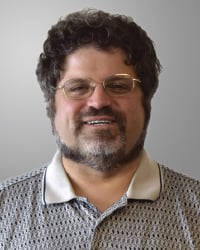 Millions of people worldwide are caught up in the uncertainty surrounding
COVID-19 and the new reality that has restricted movements, interactions, and ways of doing business. This burden has especially been felt by health care personnel and clinicians who are struggling to bring lifesaving medical care to a growing number of people who need it. Resources are stretched thin, requiring the prioritization of examination and treatment — and imaging is part of the solution.
Millions of people worldwide are caught up in the uncertainty surrounding
COVID-19 and the new reality that has restricted movements, interactions, and ways of doing business. This burden has especially been felt by health care personnel and clinicians who are struggling to bring lifesaving medical care to a growing number of people who need it. Resources are stretched thin, requiring the prioritization of examination and treatment — and imaging is part of the solution.
People are transfixed by many and varying reports about COVID-19, which clinicians say is a ribonucleic acid (RNA) surrounded by a protein shell called a nucleocapsid. According to worldwide data collected by the Johns Hopkins School of Medicine, as of press time over 3 million people have tested positive for the virus and over 200,000 have died as a result. These numbers, and the tireless efforts behind helping to reduce them from the photonics industry, are the focus of a special section in this issue.
Dr. Sanjay Jain, director of the Center for Infection and Inflammation Imaging Research at Johns Hopkins, said it will take a collaborative effort involving multiple imaging modalities to fully grasp the severity among patient groups. He said the World Molecular Imaging Society has long grappled with the potential for a pandemic, but that too little study has been conducted on imaging fungi and viruses. While approximately 80% of those tested so far have been identified as having “mild to moderate” cases — meaning a respirator was not required — COVID-19 (a variant of the SARS virus) can remain active on surfaces such as plastic for two to three days and can be present in a person’s system for up to two weeks prior to the appearance of symptoms. It is vital to find ways to noninvasively identify people who need help the most, which would enable health care workers to place them in intensive care units at the right time.
The good news in these challenging times is this: Scientific research has not slowed. Our cover story by contributing editor Marie Freebody shows how lasers have proven to be an effective means to treat conditions in many systems in the body. Read more here. And in my feature, I write about how diffuse optical spectroscopy can be combined with other technologies to provide accurate imaging of breast cancer, a technique that is being examined both in the U.S. and Europe. Read here.
Also featured in this issue:
Stephen Marchant of Photon etc. writes that the use of the NIR-II window in imaging has allowed for resolution of tissue in organisms at deeper levels than previously envisioned. He explains here. Jon Daniels of ASI writes about new developments in selective plane illumination microscopy that have allowed for generating precise images of samples in high contrast, with limited photodamage. Read more here.
As optical technologies advance, it will be more important than ever to involve and educate a new generation of researchers to carry the science into the future. In “Biopinion,” Natalia Chekhovskaya Kearney of LASER-TEC highlights interdisciplinary programs targeting the interest of students and families in all aspects of biophotonics.
Enjoy the issue!
